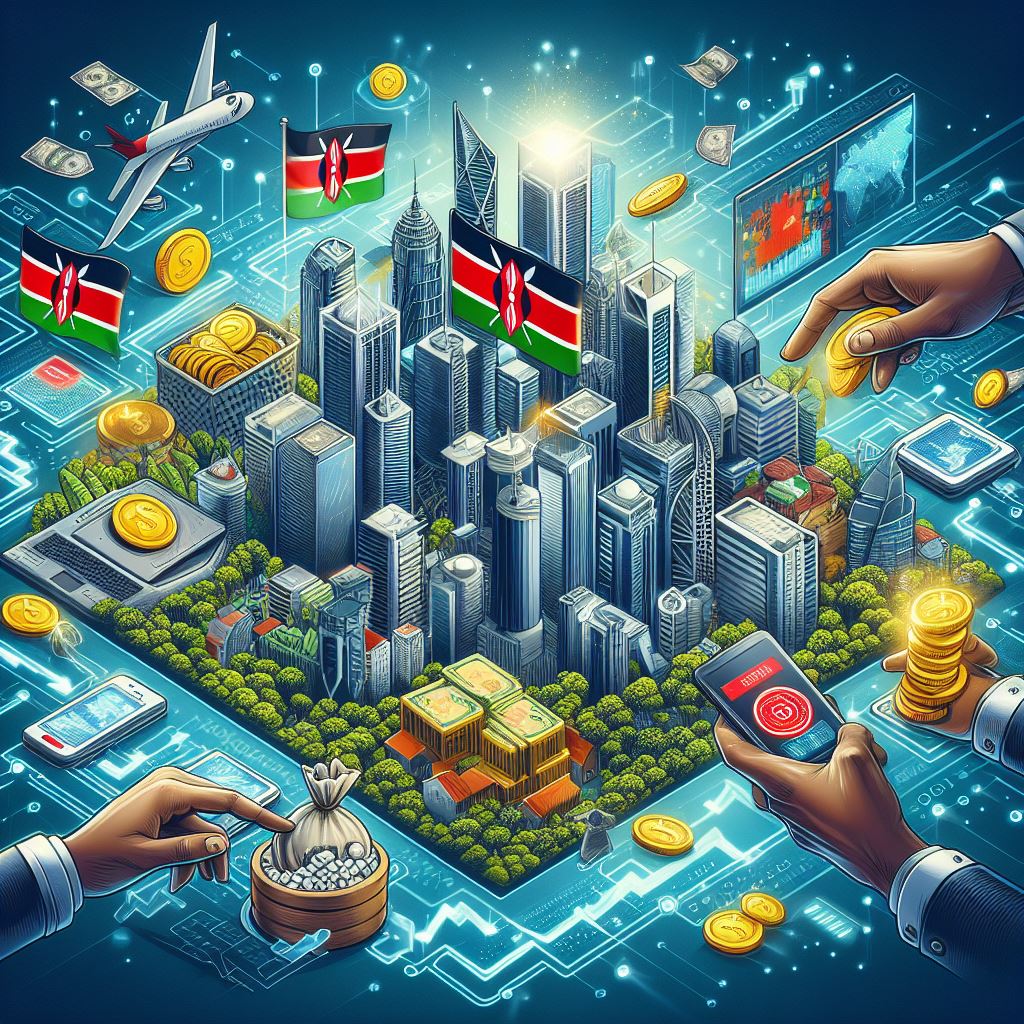This article will delve into how satellite internet works, its benefits, challenges, and its potential to transform lives in remote areas.
In today’s interconnected world, the internet is not just a luxury but a necessity. It connects us to information, education, healthcare, and each other. However, not everyone has easy access to the internet. Many people in remote and rural areas struggle to get online, creating a significant digital divide.
This divide affects their ability to participate fully in the modern world. Satellite internet offers a promising solution to this problem. By providing high-speed internet access to even the most far-flung places, satellite internet can help bridge the digital divide. This article will delve into how satellite internet works, its benefits, challenges, and its potential to transform lives in remote areas.
What is Satellite Internet?
Satellite internet is an internet connection that uses satellites to send and receive data. Unlike traditional internet, which relies on cables and wires, satellite internet beams signals from space. This means it can reach places where laying cables is difficult, expensive, or impossible. Satellite internet can provide connectivity to remote areas, rural communities, and even moving objects like ships and airplanes.
How Satellite Internet Works?
Satellite internet involves three main components: the satellite, the ground station, and the user’s dish. Let’s break down each part to understand how they work together to provide internet access.
- The Satellite
The satellite orbits the Earth and is responsible for sending signals to the ground station. These satellites are positioned in space, either in geostationary orbit (GEO) or low Earth orbit (LEO), depending on the type of service. They act as relay points, transmitting data between the ground station and the user’s dish.
- The Ground Station
The ground station, also known as a gateway, receives signals from the satellite and processes them. It then transmits these signals to the user’s dish. The ground station is a crucial link in the communication chain, ensuring that data is accurately relayed between the satellite and the end user.
- The User’s Dish
The dish, usually placed on the roof of a house or building, receives the signals from the ground station. It is carefully aligned to ensure it can communicate effectively with the satellite. The dish then sends these signals to a modem inside the house.
- The Modem
The modem, connected to the dish, decodes the signals and converts them into a format that can be used by computers and other devices. It then connects to a computer or a Wi-Fi router, providing internet access throughout the home. This setup allows users to browse the web, stream videos, and perform other online activities seamlessly.
Types of Satellites Used
There are different types of satellites used for satellite internet, including geostationary satellites, medium Earth orbit (MEO) satellites, and low Earth orbit (LEO) satellites.
- Geostationary Satellites
These satellites orbit the Earth at a fixed position above the equator. They are located about 35,786 kilometers (22,236 miles) above the Earth. Because they stay in the same position relative to the Earth, they provide consistent coverage to a specific area. However, the long-distance can cause higher latency.
- Medium Earth Orbit (MEO) Satellites
These satellites orbit the Earth at about 8,000 to 12,000 kilometers (4,970 to 7,450 miles). They offer lower latency than geostationary satellites but require a network of satellites to provide continuous coverage.
- Low Earth Orbit (LEO) Satellites
These satellites orbit the Earth at about 500 to 2,000 kilometers (310 to 1,240 miles). They offer the lowest latency and fastest speeds. However, they require a large constellation of satellites to provide continuous coverage.
Benefits of Satellite Internet
Satellite internet offers several benefits, especially for people living in remote and rural areas. These benefits include connectivity in remote areas, high-speed access, and the empowerment of underserved communities.
- Connectivity in Remote Areas
One of the biggest benefits of satellite internet is its ability to reach remote areas. Traditional internet providers often do not serve these areas because it is too expensive to lay cables. But satellite internet does not need cables. It can provide internet access anywhere with a clear view of the sky. This makes it an ideal solution for rural communities, isolated islands, and other hard-to-reach places.
- High-Speed Access
Modern satellite internet can offer high-speed access. This means people in remote areas can enjoy activities like streaming videos, online gaming, and video conferencing. They can do all these things with minimal lag, just like people in cities. High-speed internet access can also support multiple devices, allowing families to stay connected and productive.
- Empowering Underserved Communities
Satellite internet can empower underserved communities. It allows them to participate in the digital world. They can access online education, healthcare, and job opportunities. This can improve their quality of life and help them achieve their goals. For example, students in remote areas can attend virtual classes and access educational resources. Patients can consult with doctors through telemedicine. Entrepreneurs can start online businesses and reach global markets.
- Supporting Emergency Services
Satellite internet can also support emergency services. In the wake of natural disasters, traditional communication networks may be damaged or disrupted. Satellite internet can provide a reliable means of communication for emergency responders. It can help coordinate rescue efforts, provide real-time updates, and connect affected communities with aid organizations.
- Enhancing Agricultural Practices
Satellite internet can have a big impact on agriculture. Farmers can use it to access real-time data and information. This can help them make better decisions about planting, watering, and harvesting. For example, they can use sensors to monitor soil moisture and weather conditions. This can reduce unnecessary energy usage and overuse of resources like pesticides and fertilizers. It can also boost yields by predicting the best harvest window.
Challenges of Satellite Internet
While satellite internet offers many benefits, it also comes with challenges. These challenges include weather interference, latency issues, and the cost of installation and maintenance.
- Weather Interference
One challenge of satellite internet is weather interference. Heavy rain, snow, or storms can disrupt the signal. This can cause slow speeds or temporary loss of connection. However, modern technology is improving, and these issues are becoming less common. Engineers are developing more robust systems that can withstand adverse weather conditions.
- Latency Issues
Another challenge is latency. Latency is the time it takes for data to travel from the user’s dish to the satellite and back. Because satellites are far from the Earth, this can cause a delay. This delay is usually not noticeable for browsing or streaming but can be an issue for online gaming or video calls. LEO satellites, which are closer to the Earth, can help reduce latency.
- Cost of Installation and Maintenance
The cost of installation and maintenance can also be a challenge. Setting up a satellite internet system requires specialized equipment and professional installation. This can be expensive, especially for individuals and small businesses. Additionally, maintaining the system can incur ongoing costs. However, as technology advances and more providers enter the market, prices are expected to decrease.
- Limited Data Plans
Some satellite internet providers offer limited data plans. This means users have a cap on the amount of data they can use each month. Exceeding this cap can result in additional charges or reduced speeds. This can be a limitation for households with high data usage. However, some providers are now offering unlimited data plans to meet the growing demand.
- Regulatory Hurdles
Navigating regulatory requirements is also a challenge for satellite internet providers. Different countries have varying regulations regarding spectrum usage, licensing, and operational permissions. These regulatory hurdles can slow down the deployment of satellite internet services and increase operational costs. Providers must work closely with international and local regulatory bodies to ensure compliance and smooth operation.
Major Satellite Internet Providers in the Market
Several companies are leading the way in satellite internet. HughesNet, Viasat, and Starlink are some of the big names. They offer various plans to cater to different needs and locations. New players and startups are also entering the market, fostering innovation and competition.
- HughesNet
HughesNet is one of the oldest and most established satellite internet providers. It offers nationwide coverage in the United States. HughesNet provides various plans with different speeds and data allowances. The company is known for its reliable service and customer support.
- Viasat
Viasat, formerly known as Exede, is another major player in the satellite internet market. It offers high-speed internet with speeds up to 100 Mbps. Viasat provides coverage in the United States and several other countries. The company is continuously expanding its network and improving its technology.
- Starlink
Starlink, a project by SpaceX, is a newcomer to the satellite internet market. It aims to provide global coverage with a constellation of LEO satellites. Starlink offers high-speed internet with low latency. The service is currently available in several countries and is rapidly expanding. Starlink’s innovative approach and ambitious goals have garnered significant attention.
- OneWeb
OneWeb is a British company developing a similar satellite internet service to Starlink. It aims to provide global coverage with a network of LEO satellites. OneWeb focuses on connecting remote and underserved areas. The company has launched several satellites and plans to expand its network.
- Amazon’s Project Kuiper
Amazon’s Project Kuiper is another ambitious satellite internet project. It aims to provide affordable broadband connectivity to underserved communities around the world. Project Kuiper plans to launch a constellation of LEO satellites. The project is still in the development phase but has the potential to be a major player in the market.
Conclusion
Satellite internet is proving to be a transformative solution in bridging the digital divide, especially in remote and underserved areas. Traditional internet infrastructure often struggles to reach these regions due to geographical and economic constraints. However, satellite internet, particularly with the advent of Low Earth Orbit (LEO) satellites, is overcoming these barriers by providing reliable, high-speed connectivity from space.
This technology is not just about connecting people to the internet; it’s about opening up a world of opportunities. From enabling access to online education and healthcare to fostering economic development and social inclusion, satellite internet is empowering communities to thrive in the digital age. As advancements continue and costs decrease, the potential for satellite internet to create a more connected and equitable world is immense.
In summary, satellite internet is not just a stopgap measure but a robust and scalable solution to the global challenge of digital inequality. By leveraging the power of satellites, we can ensure that no one is left behind in our increasingly interconnected world. The future of connectivity is bright, and satellite internet is leading the way.


.png?locale=sheng)























